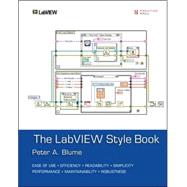Peter Blume is the founder and president of Bloomy Controls, Inc., a National Instruments Select Integration Partner that specializes in LabVIEW-based systems development. Since LabVIEW Version 2.5, Blume and his staff of engineers have solved more than a thousand industrial applications for customers throughout the northeastern United States. To promote consistent quality among multiple developers in multiple offices, Blume established and evolved the company’s LabVIEW development practices.
Blume has written and presented multiple LabVIEW style-related presentations, including Bloomy Controls’ Professional LabVIEW Development Guidelines at NIWeek 2002 and Five Techniques for Better LabVIEW Code at NIWeek 2003. He also has published technical articles in various trade publications, including Test & Measurement World, Evaluation Engineering, Electronic Design, and Desktop Engineering.
Blume holds a Bachelor of Science degree in electrical engineering from the University of Connecticut. He is a National Instruments Certified LabVIEW Developer and Certified Professional Instructor. The company has offices in Connecticut, Massachusetts, and New Jersey. For more information, visit www.bloomy.com.
Readers who want to contact Blume regarding style-related suggestions, questions, or comments may do so at the following email address: lvstyle@bloomy.com . Readers interested in contracting Bloomy Controls for a LabVIEW development project should call us directly or contact us through our website at www.bloomy.com/quote.








